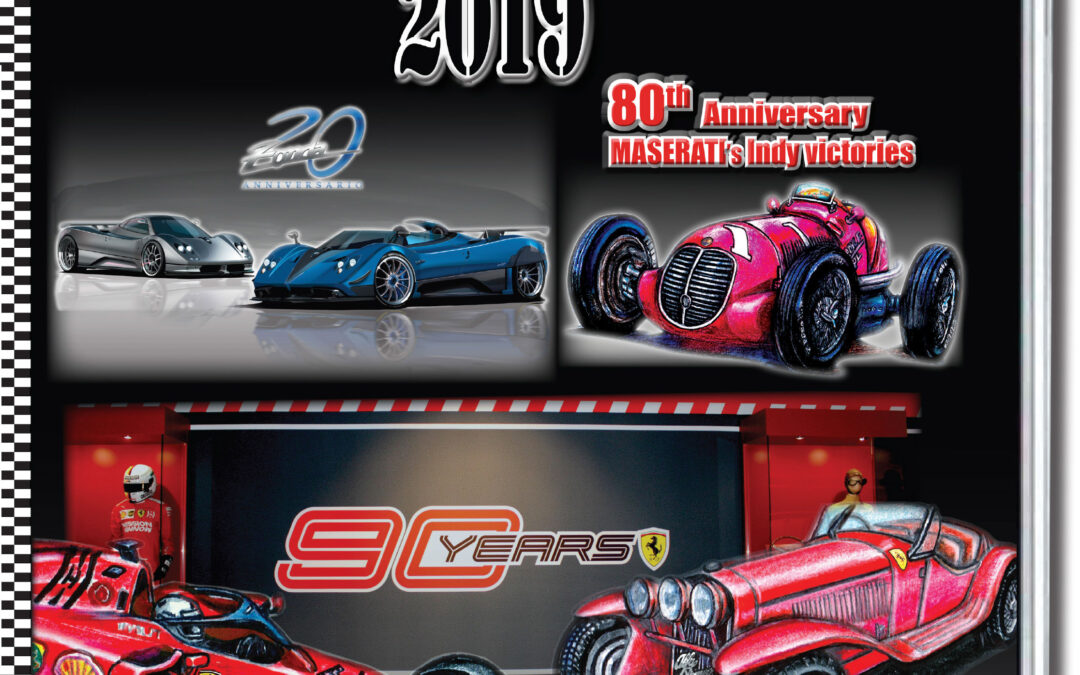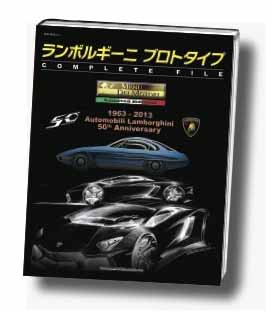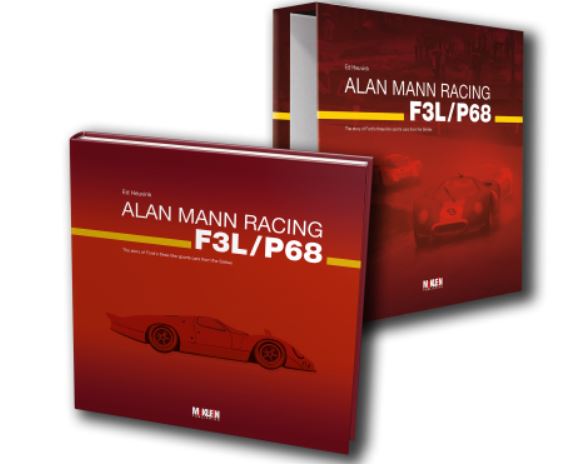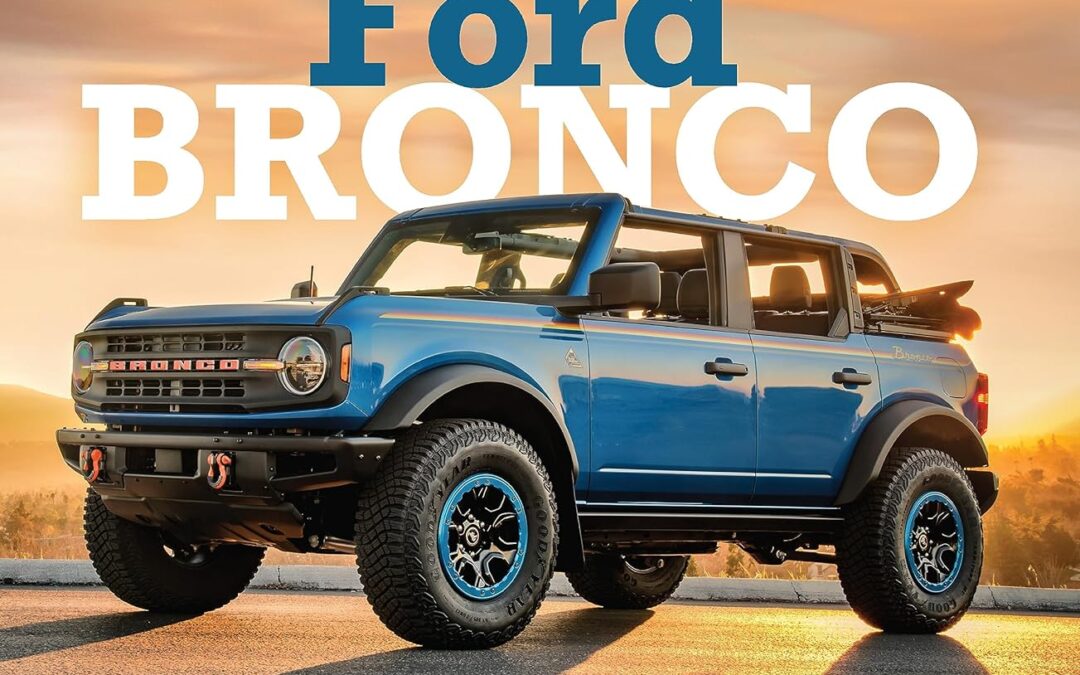
From the first drawings in the early 1960s to today’s uber-popular new Bronco, get the full story of Ford’s legendary SUV in this stunningly illustrated volume.
When Ford introduced the Bronco for the 1966 model year, its intent was to get a slice of the off-road and outdoor enthusiast utility market then owned by the popular Jeep CJ and International Harvester Scout. What Ford couldn’t know at the time was that it was creating a legend—a rugged, square-shouldered vehicle that would exist in its original form through 1977 and in various guises for a further 20 years, wrapping up its first life in 1996.
Since the Bronco’s retirement, the SUV/crossover sector has become the dominant segment of the automotive market. Nearly all manufacturers—even exotics like Lamborghini and Bentley—offer SUVs in their line-ups. In fact, Ford has largely discontinued passenger vehicles (except the Mustang) in favor of trucks and SUVs. Simultaneously, the collector market has turned its eye to vintage SUVs and trucks, the former growing significantly over the past 5 years. Classic Broncos have doubled in value over that period, regularly selling at prices ranging from $40K to $100K.
The story picks up in 2017 when Ford announced plans to revive one of its most hallowed nameplates: Bronco. Brilliantly styled to pick up the beloved, boxy cues of the original, customers began dropping deposits as soon as the order books opened. Ford still struggles to meet demand with speculators flipping new Broncos on the secondary market for thousands over invoice.
Beautifully produced and expertly written, Ford Bronco is a must-have book for all Bronco and SUV enthusiasts.

Expanded new edition
The first edition of the present book was published in 2014 and was quickly acclaimed as the bible of the classic Jaguar racers. This greatly expanded new edition runs to more than 400 pages and contains 500 illustrations. It brings the individual stories of over 150 cars up to date, and includes additional useful information and appendices. Today the name of Jaguar still ranks high in the pantheon of British cars that have won the Le Mans 24-hour race. A mere 20 years since the birth of their first car, Jaguar had become the leading high-performance car in Britain thanks to the revolutionary XK engine, and the XK120 was in its day the fastest production car in the world. While the company had begun to earn its spurs in motor racing, it was a bold step to build a new car with the specific intention of entering Le Mans, at the time the most famous motor race in the world. Remarkably, the new Jaguar C-type succeeded in winning at Le Mans on the first attempt. A further four Le Mans victories followed: in 1953 for the C-type again, and then three wins for D-types from 1955 to 1957, by which time the Jaguar works team had been withdrawn from racing. Private entries of Jaguar C- and D-types in other races continued for many years. The E-type was never as successful in racing, since it was conceived as a GT road car rather than a racer, but the small run of lightweight cars and other competition versions added further lustre to Jaguar’s reputation. C- and D-types were sold in some numbers to private owners on both sides of the Atlantic, many of whom obviously used them for racing, but unlike most later sports-racing cars they could still be used on the road. This was and remains one of their many attractions. Virtually all the cars have survived, and in recent times have seen a steady increase in value. This updated, enlarged and comprehensive new edition of the Register is a tribute to these glorious cars, to the people who were involved in their design and production, and to the drivers who campaigned them.

Realize your Ford Coyote engine’s full potential by using this detailed resource as a guide to select the right parts for the street or the strip.
Veteran Ford writer and historian, Jim Smart, explains and highlights all of the latest and greatest options to achieve more horsepower and torque, and of course, faster quarter-mile times in Ford Coyote Engines: How to Build Max Performance-Revised Edition.
In this Revised Edition, now covering Generation III engines as well as Generation I & II, upgrades included are engine building techniques, cold-air induction kits, supercharger and pulley kits, better exhaust headers, fuel system and ECU tuning upgrades, and more. Both Ford and the aftermarket have produced an array of parts to squeeze even more power out of your Coyote.
Ford introduced its first “clean slate design” V-8 engines in the early 1990s in Ford, Lincoln, and Mercury models. Known as the “Modular” engine family, the 4.6L engines employed new overhead cams, multi-valve performance, distributorless ignition, and more. This engine had new technology for its time, and it proved to be an extremely durable workhorse that logged hundreds of thousands of miles in police and taxi applications as well as light-duty trucks. And, of course, hotter versions, and even supercharged versions, found their way into performance applications such as Mustang GTs and Cobras.
By 2011, Ford wanted something hotter and more current, especially for its flagship Mustang GT and GT350 models, which were suddenly competing with new 6.2L LS3 engines in Camaros and 6.4L Hemi engines in Challengers. Enter Ford’s new 5.0L “Coyote” engine with Twin Independent Variable Cam Timing (Ti-VCT); it was an evolution of the earlier 4.6L and 5.4L Modular designs. Although the new Coyote engine had increased displacement, it still had far fewer cubes than the competition. Despite less displacement, the Coyote could hold its own against bigger Chevy and Chrysler mills thanks to advanced technology, such as 4V heads with better port and valvetrain geometry. The Coyote is also Ford’s first foray into technology that includes Ti-VCT and cam-torque-actuated (CTA) function, which is a fancy way of saying variable cam timing for an incredible power curve over a broader RPM range. Now, in Generation III, Ford has implement a system using both Port and Direct Fuel Injection, taking advantage of the benefits of both systems in a single application.
Even with all of this new technology, there is always room for improvement. If you are looking for even more power from your new Coyote, look no further than this volume.

- A stunning coffee table book of historically significant NASA photos
- Amazing photographs complemented by quotes and stories from noted personalities at NASA
- A chronological journey through NASA’s history, from Apollo to the James Webb Telescope
- Awe-inspiring, inspirational and motivational, a perfect gift and a must for your library
- Quotes from astronauts Commander James Lovell and John Glenn, as well as John F Kennedy, Ralph Waldo Emerson and many more
“The history of space exploration is best presented in this book of NASA photographs, whose images are universally inspirational.” – Commander James Lovell, Apollo 13
NASA has worked at the forefront of space exploration and research since 1958. Their devotion to furthering our understanding of what lies beyond our atmosphere has seen 12 humans walk on the surface of the moon, helped form the International Space Station, and placed numerous rovers on Mars. Voyager 1, launched by NASA on 5 September 1977, is the furthest manmade object from earth, having left our solar system entirely – and the agency’s plans for the future are equally inspiring.
This book celebrates NASA throughout the years, from its inception to its 60th anniversary in 2018, and beyond. A visual tour-de-force, the book collects high resolution NASA photos of historic significance; from rarely seen photos and the words of President John F. Kennedy commanding the space race, to the many triumphs and tragedies of the Apollo Missions, moon landings, the International Space Station, space shuttles, journeys to Mars and explorations of our galaxy’s outer reaches. These breathtaking images are complemented by heartfelt words of hopes and imagination for the future, encouraging readers to admire their world from a different perspective. NASA: the Greatest Milestones is a stunning 300 page book.

The Olympic Airways story has fascinated Graham M. Simons for many years. This new book represents the culmination of decades spent researching the history of this fascinating Greek airline. It is a story of evolution, conflict, personality and politics, all set against a backdrop of world and civil wars, coups and counter-coups.During the course of his research, it became apparent to the author that many of the fine details pertaining to the company weren’t widely known, although almost everyone had heard of the towering, controversial, leading figurehead who oversaw much of the central part of the story: Aristotle Socrates Onassis. His colorful life is threaded through this history, lending it drama and multiple levels of intrigue.The airline’s story cannot be told in isolation. Olympic did not spring fully formed into being in 1957. The named company may have come into being then, but its roots were set much further back in history through a number of predecessor airlines – both national and international – who had been using the Hellenic Republic and Athina as the crossroads of the air for the Eastern Mediterranean since the dawn of aviation.This is the story of the birth and dramatic life of an airline with a chequered, controversial and complicated history. Graham M. Simons has skilfully woven all the various threads to create a powerful and important historic record.

Freewaytopia: How Freeways Shaped Los Angeles explores how social, economic, political, and cultural demands created the web of freeways whose very form―futuristic, majestic, and progressive―perfectly exemplifies the City of Angels.
From the Arroyo Seco Parkway, which began construction during the Great Depression, to the Century Freeway, completed in 1993, author Paul Haddad provides an entertaining and thought-provoking history of the 527 miles of roadways that comprise the Los Angeles freeway system.
Each of Los Angeles’s twelve freeways receives its own chapter, and these are supplemented by “Off-Ramps”―sidebars that dish out pithy factoids about Botts’ Dots, SigAlerts, and all matter of freeway lexicon, such as why Southern Californians are the only people in the country who place the word “the” in front of their interstates, as in “the 5,” or “the 101.”
Freewaytopia also explores those routes that never saw the light of day. Imagine superhighways burrowing through Laurel Canyon, tunneling under the Hollywood Sign, or spanning the waters of Santa Monica Bay. With a few more legislative strokes of the pen, you wouldn’t have to imagine them―they’d already exist.
Haddad notably gives voice to those individuals whose lives were inextricably connected―for better or worse―to the city’s freeways: The hundreds of thousands of mostly minority and low-income residents who protested against their displacement as a result of eminent domain. Women engineers who excelled in a man’s field. Elected officials who helped further freeways . . . or stop them dead in their tracks. He pays tribute to the corps of civic and state highway employees whose collective vision, expertise, and dedication created not just the most famous freeway network in the world, but feats of engineering that, at their best, achieve architectural poetry. And let’s not forget the beauty queens―no freeway in Los Angeles ever opened without their royal presence.
Freewaytopia is part colorful lore, part civic and historical critique, and part homage to the most famous freeways in the world.
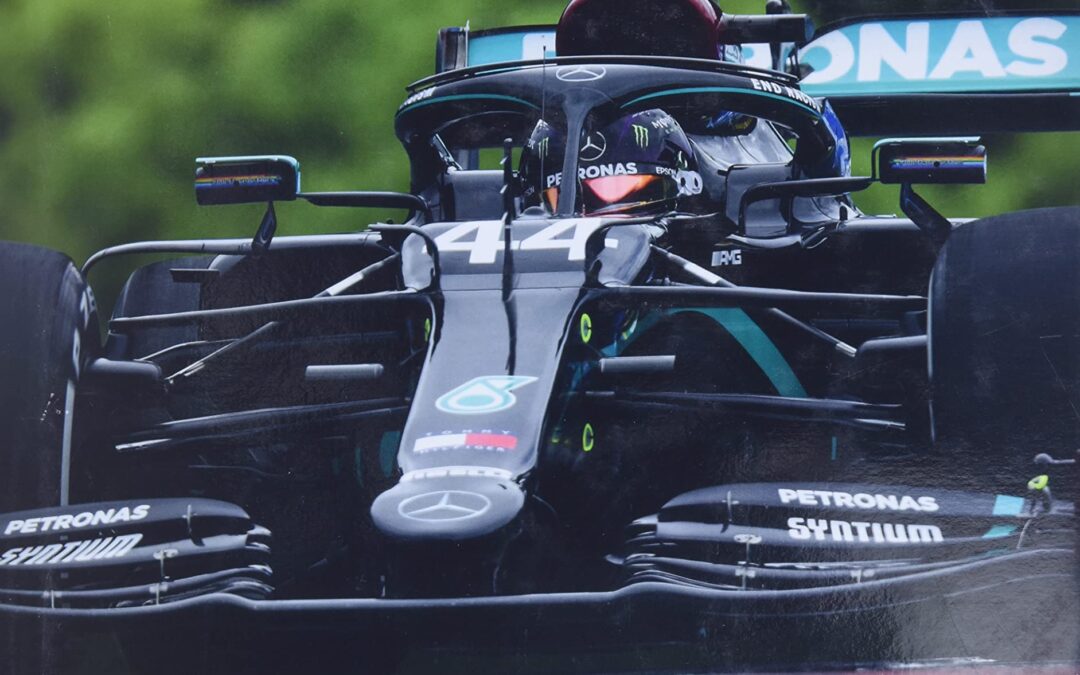
With Pandemic closing all motorsport activity in the first half of the year, The condensed schedule for the 17-race Formula 1 World Championship season is covered in its usual full depth, with hugely experienced paddock insiders Tony Dodgins and Maurice Hamilton dissecting the drama and intrigue that are intrinsic parts of any F1 season. Their race commentaries are complemented by detailed results spreads, including lap charts and tyre strategies.
Mercedes-Benz again proved the class of the field, with Lewis Hamilton, backed by the experienced Valtteri Bottas, bidding to win his seventh world championship,
Ferrari’ found themselves uncompetitive and Charles Leclerc, and Sebastian Vettel struggled to find the speed that made them winners in 2019, and it was left to the ever-resourceful Red Bull Racing, with the exciting talent of Max Verstappen, to rise to the challenge and further justify their decision to switch to Honda power.
Below the top three teams, Renault at last looked like return to past glories while locked in battle with McLaren and Racing Point for fourth place in the constructors’ championship.
Highly respected Mark Hughes looks at the technical developments behind all the competitors in his team-by-team review, enhanced by Adrian Dean’s beautiful F1 car illustrations.
In addition to Formula 1, the sport’s other major categories are all afforded ample coverage. The Formula 2 and Formula 3 championships, key rungs on the professional single-seat ladder, are chronicled, as is the rise of Formula E, which is rapidly gaining considerable support from major manufacturers.
In sports car racing, the all-conquering Toyota, once again, seem set to win the Le Mans 24-hour race. Also covered are the door-banging exploits of the leading touring car series – the World Touring Car Championship, DTM (German Touring Cars) and the British Touring Car Championship.
From the other side of the Atlantic, Gordon Kirby provides his usual insightful analysis of the US racing scene which majors on the compelling action of the ever-growing Indycar series and the gruelling NASCAR series.
AUTOCOURSE provides the most comprehensive record of the year’s sporting action, complete with results, published anywhere in a single volume. It is required reading for motor sport fans the world over.

The Land Rover Story is a roller coaster ride through the life and times of Land Rover. Fast-paced and entertaining, it brings alive all aspects of Land Rover from its humble beginnings in 1948 to today’s world-wide renown, with the vehicles — successes and failures — and people at the centre of the story.
- The 1940s. How the Land Rover came about; the Wilks brothers; the Centre Steer enigma; development and production; launch and reaction.
- The 1950s. Rapid development and evolution of the original; successes and dead ends; worldwide reach; early expeditions; weird and wonderful modifications; the Series II.
- The 1960s. Consolidation and further developments; Series IIA; military models; initial development of the Range Rover; search for a V8 engine.
- The 1970s. The Series III; Range Rover’s popularity but lack of investment; Land Rover abandons US market; the British Leyland story; escape from BL and Michael Edwardes, saviour of Land Rover.
- The 1980s. British Aerospace ownership; Land Rover grows as most of Britain’s car industry self-destructs; emergence of the coil-sprung models; make or break time with launch of Discovery (Europe’s best-selling 4×4).
- The 1990s. Tdi engines; Defender and its development. BMW ownership; second-generation Range Rover P38; Freelander; second-generation Discovery; Td5 engine.
- The 2000s. Ford takeover, alliance with Jaguar, shift towards luxury; third-generation Range Rover L322; the G4 Challenge; Discovery 3, Range Rover Sport, TDCi Defender, Freelander 2, Discovery 4.
- The 2010s. Tata takeover, upsurge in sales and profits; Range Rover Evoque and Victoria Beckham; Range Rover 4; Range Rover Sport 2; Discovery Sport; Discovery 5; Range Rover Velar; DC100 concept; end of Defender production; rise of Defender as a fashion icon; and much more.
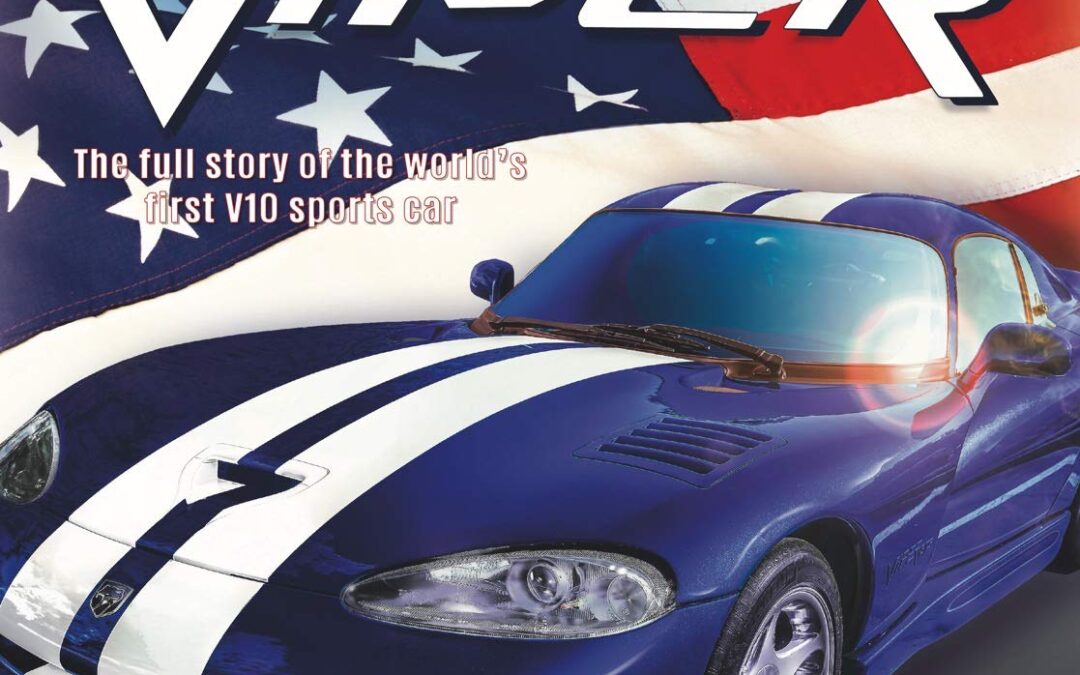
The Viper stunned Americans by showing that Dodge, whose cars were all front-wheel drive (and mostly powered by four-cylinder engines), could make a raw, brutal, V-10-powered car that could run with the best. Team Viper went a step further at Le Mans, proving that an American car could handle turns, too – so well that it won its class, repeatedly, at a fraction of the cost of the cars it beat. Dodge Viper covers the transition from a concept to a rough and brutal rocket to a world-class supercar, and includes every generation. The story also tells of the rough times when the entire Viper business could have been sold to the highest bidder, and considers alternative paths the 2013-17 Viper might have taken.
This is not just a gushing tribute to the Dodge Viper, the author provides an objective view of the full story, using business, historical, and enthusiast perspectives. The book looks at the business case for each generation, the development stories and their outcomes, and describes some of the issues owners may have to watch out for, particularly in the early models.
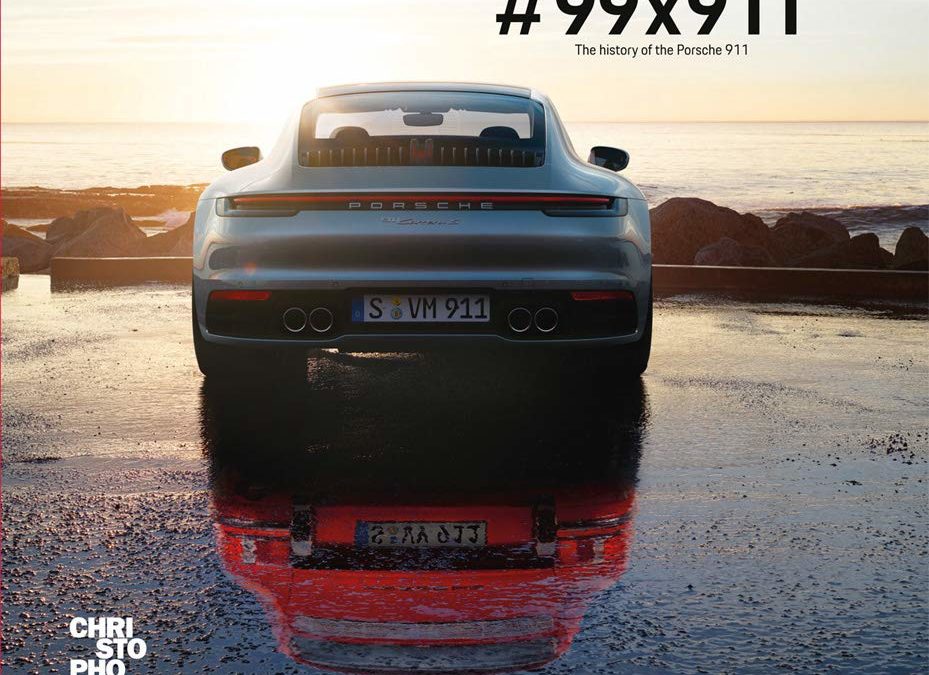
•Incredible miniature Porsches, photographed in ‘real-world’ settings – each model is 1/43rd scale
•All of the eight 911 generation in 99 models, among them the Porsche ‘Fledermaus’ (prototype TS 901), Porsche 901/911 and the Porsche 911 Carrera S (Porsche 992)
•Handy Porsche compendium, in chronical order from 1962 to 2019
•Informative, historical and technical details to each and every model
Five decades, eight generations, one number: 911.There is no other car as legendary as the Porsche 911. Old-timer, new release or racing car legend; fans worldwide are fascinated.
The Porsche 911, an epitome of a German sports car, is a world-renowned import success and dream car. In this multi-faceted work, the 99 most important models of the legend are presented chronologically as miniatures in a 1/43rd scale, each with a picture and text page, in an informative, entertaining and surprising way: as Urban Outlaw, flat speedster, Germany’s Next top model, as a wolf in sheep’s clothing… all put together by author Jörg Walz, a collector since childhood.
The author places the snapshots of vehicle miniatures in a ‘real’ environment and presents a well-assorted digital car museum. The charming interplay between a small car model set into a lively background is fascinating. The originally spontaneously created photo collection is completely simply “iPhotographed”, without further aids or artificial arrangements, initially taken for Instagram.
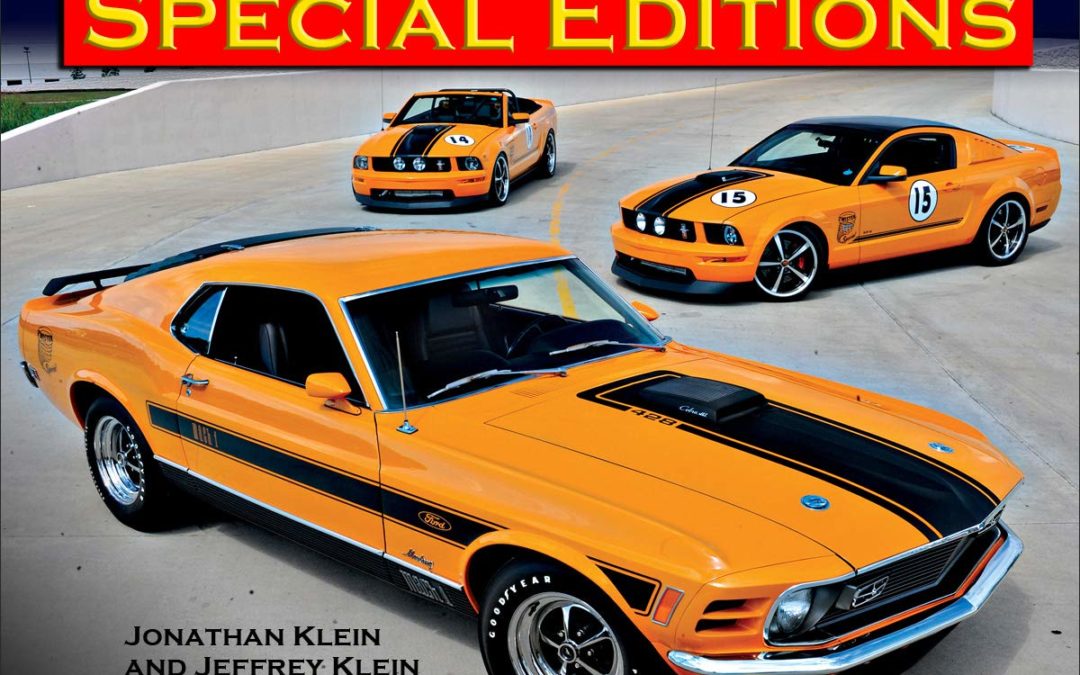
When Ford rolled out the Mustang in April 1964 it was an instant hit. Even with its immense popularity it didn’t stop Ford Corporate, zone managers, and dealerships from taking it an extra step further. Just two short months later, the first special-edition Mustang debuted at the Indianapolis 500 tasked with pacing the race, and it’s been full throttle ever since.
This book examines more than 300 special-edition Mustangs from 1964 through today. Coverage includes factory offerings such as the 2001 Bullitt and SVT Cobras, regional promotions including the Twister Special, third-party tuners such as Roush and Saleen, and factory race cars including the 1968-1/2 Cobra Jets and the 2000 Cobra-R. You may find Mustangs in this book that you had no idea even existed!
Never has a volume this detailed and with this many model Mustangs been published. The authors have taken their decades of research and logged them into a single compilation. Each Mustang is accompanied by production numbers, key features, and photos of surviving cars whenever possible. This book is sure to be a valued resource in your Mustang memorabilia collection!
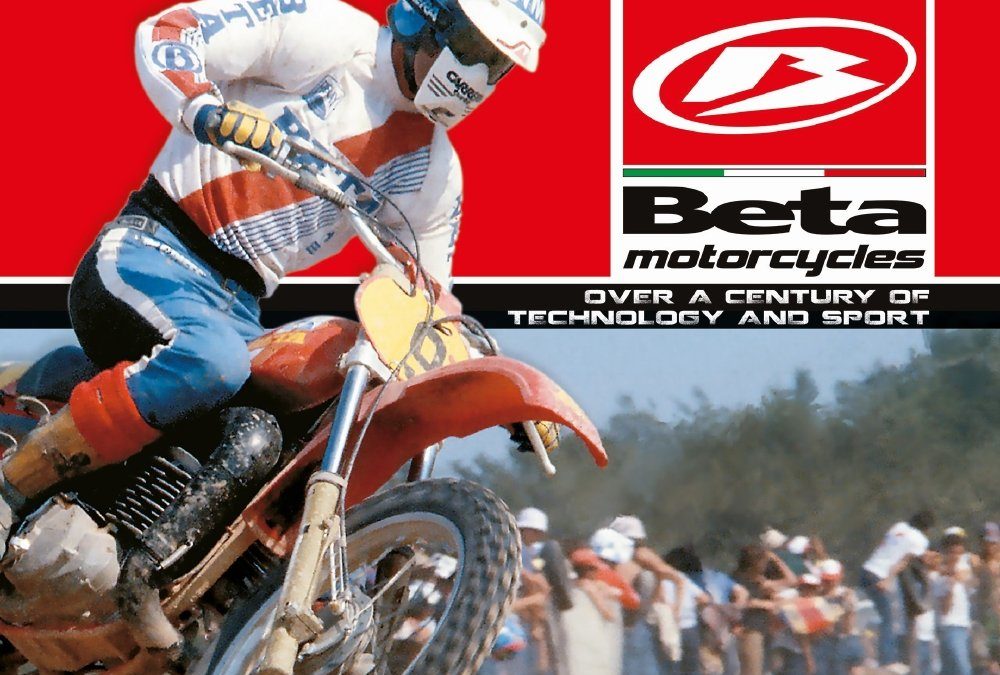
This book covers the long history, from its origins through to the present day, of the historic Italian manufacturer Beta Motorcycles, active in the two-wheeled world for over 100 years, presenting previously unpublished material.
A particularly versatile firm, Beta Motorcycles has proved capable of diversifying its products–building all kinds of motorcycles–and satisfying the mutating demands of its clientele. The Florentine marque built its own two- and four-stroke engines in-house, but has always been open to joint ventures with other European or Japanese firms.
Founded as a bicycle manufacturer, Beta Motorcycles moved into the moped market in the 1960s, off-road motorcycles in the late 1970s, enduro models in the following decade and then scooters, for over 20 years, not to mentions the Trial sector in which it conquered eight World Championship titles. In more recent years the company has returned to the “classic” Motocross and Enduro categories and in 2016 collected a further two world titles, including the Constructors’ Championship.
The book features a comprehensive catalog of every model and every engine produced by Beta Motorcycles over more than a century.

The postwar Morris Minor, designed by Alec Issigonis, was one of the most popular British Cars. 2018 marks 70 years since the first Minors rolled off the production lines at Cowley in Oxfordshire. In this celebratory publication Ray Newell looks in detail at the development of the wide range of models produced during a production run that spanned twenty two years in the UK. Using mainly contemporary materials covering four decades, he transports the reader back to an era when the pace of life was much slower and the marketing of the vehicles was considerably different to the slick advertising of today. The worldwide appeal of this trend-setting vehicle is examined in the context of the ‘export or die’ mentality that dominated postwar Britain, as are the innovative production methods used to ensure that ‘Morris Motors Ltd’ lived up to its ‘quality first’ reputation. Variations from standard specifications are considered with reference to mechanical uprating, different body styles and the use of modern accessories to enhance further the comfort and styling of what was dubbed ‘The World’s Supreme Small Car’. Issigonis sketches of the prototype cars, sales brochures, promotional materials, and rare and unusual photographs make this a fascinating book. The continuing appeal of the car voted Britain’s most popular classic in 2016 is examined, as are the factors which continue to attract a new generation of 21st century owners.

It is not a coincidence that the year, 2017, marks the 70th anniversary of both Ferrari and the historic Gilco brand. It’s the natural consequence of a joint all-Italian piece of history, one that saw the two enterprises start together and tightly cooperate for many years.
It was 1947 when Gilberto Colombo set up his operations to design and develop new ground-breaking, ultra-light car frames, drawing on his precious experience, especially his work with the aviation industry.
Among further applications, he also started producing rational tubular furniture, as previously produced by his father’s company, on Bauhaus designs, since the 1930’s.
While Enzo Ferrari was turning his machine tool production business into a racing car development firm, thus launching the Ferrari brand, Gilberto Colombo, after transforming his GC Automotive Application unit into Glico Autotelai (Gilco car frames), founded the Gilco brand.
Gilco (obviously an acronym for Gilberto Colombo) has since signed an incredible series of innovative ideas that revolutionised quite a few of the basic concepts on which racing car development was based. His new sophisticated design for industrial production gave a great impulse to some then uprising Italian companies that are still among the most important worldwide today.
Among these, on top of major car brands like Ferrari, Maserati, Alfa Romeo, Lancia, Zagato and more, are the most important bicycle companies: Ernesto Colnago, Columbus and Cinelli; and nautical companies: Cantieri Folli and Lillia, whose most valued, world championship winning Star sailboats were designed by Gilberto Colombo. On top of all that, interesting architectural designs, and, obviously, tubular furniture.
Today Gilco is a historical brand, strong of a prestigious archive of original designs, but also engaged in building the future. An important part of the legacy of Gilberto Colombo, on top of said archive, is Trafiltubi, the company he founded to produce super-high-performance tubes aimed at extreme applications and whose enduring high-quality production bears witness to its motto: “il tubo non tradisce mai”. (a tube will never let you down).
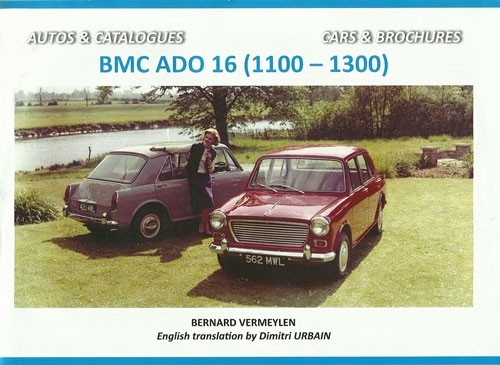
The BMC ADO 16 (Austin Drawing Office 16) Morris 1100 car was revealed to the international motoring press on 15th August 1962, a larger and worthy companion to the BMC Mini which had been launched in 1959 to worldwide acclaim. Both designs were the work of Alec Issigonis and featured transverse engines with the gearbox in the sump, driving the front wheels, groundbreaking technology at the time which has been universally adopted since, though not the gearbox in the sump. A further revolution was the suspension; the Mini had progressive springing by rubber cones, the work of rubber technician Dr. Alex Moulton which, together with rack-and-pinion steering, was responsible for the Mini’s incredible road-holding. The larger Morris/Austin 1100 series cars were fitted with a developed version named “Hydrolastic”. Suspension was still by Dr. Moulton’s rubber cones, but associated with a chamber filled with water and antifreeze and incorporating damper valves, which was connected to similar rear units via pipes and was a form of self-levelling. A unique solution to the problems associated with large differences between laden and unladen weights in small family cars.
Bernard Vermeylen’s fascinating book, with English and French text, studies the design, technologies and development of Issigonis’s and BMC’s hugely-successful ADO 16 design, which lasted for over 10 years and evolved from the Austin/Morris 1100 to the 1300 cars, which in turn were built in a bewildering variety of badge-engineered makes; Vanden Plas Princess, MG, Riley Kestrel and Wolseley, as well as being licence-built in Italy (Innocenti), Spain (Authi), Australia (Nomad), New Zealand and South Africa (Apache). BMC themselves produced GT versions, Traveller and Countryman estate cars and a variety of different spec. models for various markets.
Most of the illustrations in this book take the form of images from factory brochures and press photos, detailing the many changes BMC made to the ADO 16 in the decade it was in production. Specifications of different models, paint colours and sales prices are all listed in Bernard Vermeylen’s book, it is as comprehensive a survey as is possible and particularly interesting for the details published on the many export and licence-built variants of BMC’s 1100/1300 cars.

Dubbed ‘Warthog’ – or just ‘Hog’ – by those who fly and maintain it, the Fairchild Republic A-10 Thunderbolt II is the world’s undisputed close air support attack jet. As tough as it is ugly, it has built a fearsome reputation as a tank buster and infantry killer in conflicts around the globe, and its GAU-8 Avenger 30mm cannon strikes fear into the hearts of all unlucky enough to be on the wrong side of it.he A-10 was clutched from the jaws of retirement by the 1991 Gulf War. At the time of the conflict, the United States Air Force was making plans to shed it’s A-10 fleet, citing obsolescence and redundancy. As the ensuing conflict showed, nothing could have been further from the truth, and no other airframe could have provided the US and Coalition commanders with the sort of forward air control, close air support, combat search and rescue, and tank busting capabilities that the Hog did. Since then the A-10 has delivered capabilities to battlefield commanders in the Balkans (1990s), Afghanistan (2001 onwards) and the second Gulf War (2003 onwards), and Libya (2011). A-10s have flown around 11 per cent of Operation Inherent Resolve sorties (striking IS targets in Iraq) since combat operations began in August 2014.
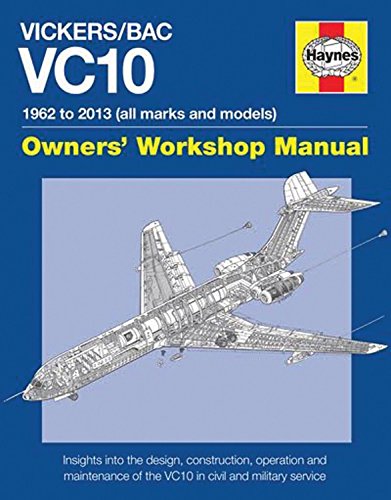
Designed in the 1950s to operate on long-distance routes, the four-jet Vickers VC10 saw service with BOAC and a number of other airlines from the 1960s to 1981. It enjoyed a further career with the RAF as a strategic transport and later as an aerial refuelling aircraft. The last VC10 K3 tanker was retired by the RAF in 2013. Keith Wilson examines the design, construction and use of the VC10, using as his centrepiece ex-RAF VC10 C1K (XR808) and VC10 K3 (ZA147) tankers at Bruntingthorpe, Leicestershire.

